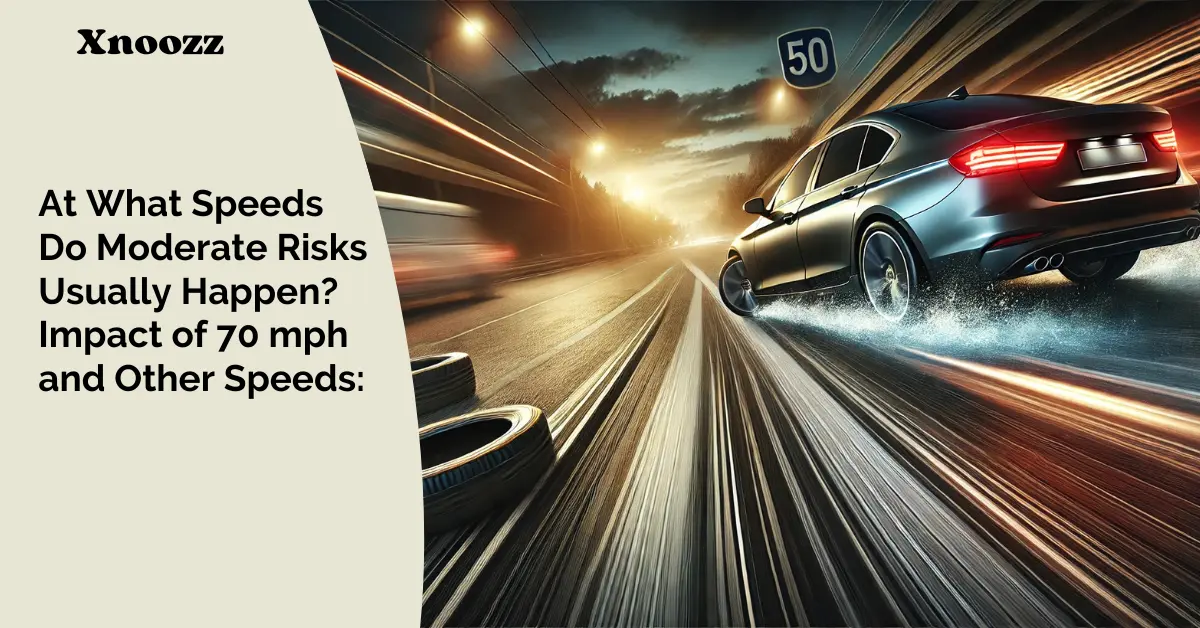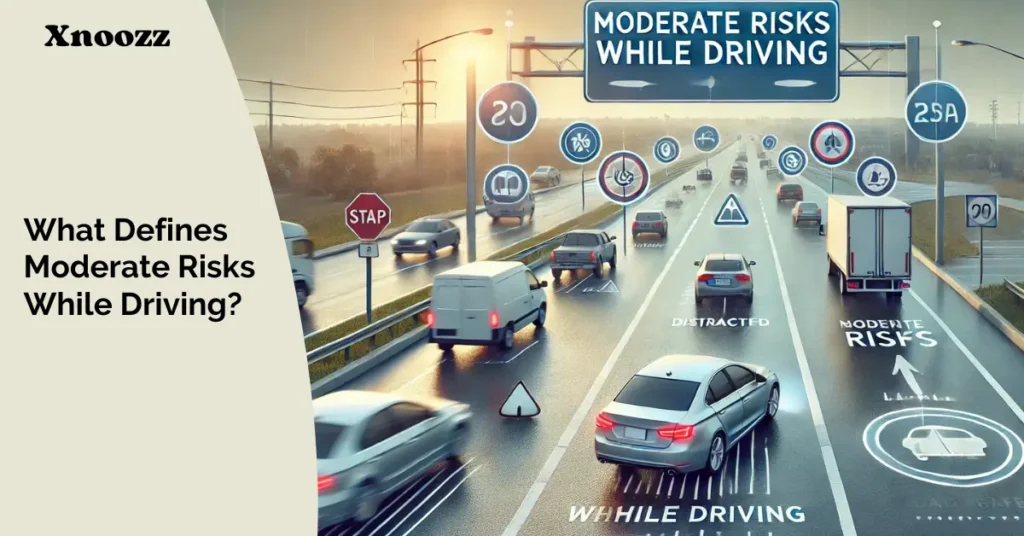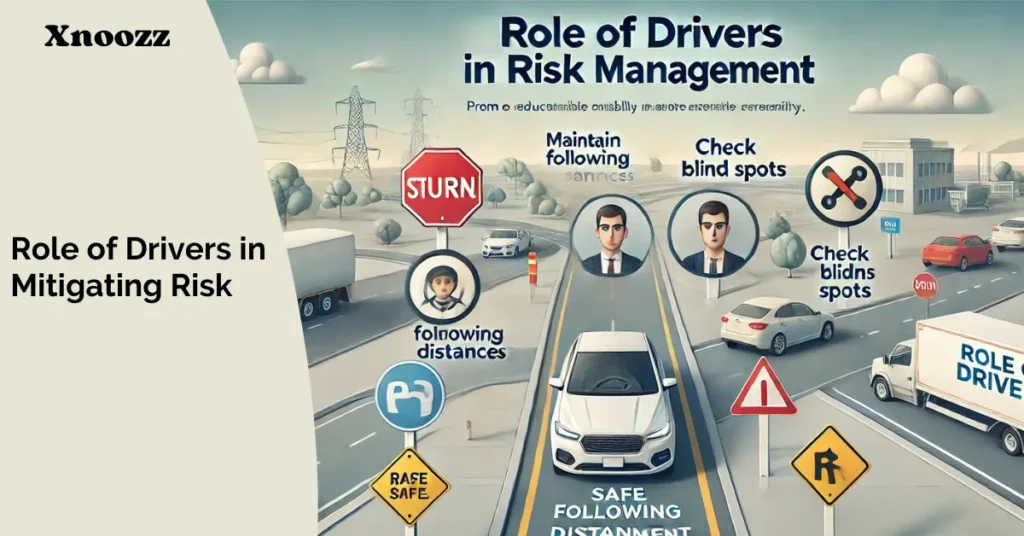At what speeds do moderate risks usually occur? Impact of 70 mph and Other Speeds
- Lily Monroe
- •
- 10 min read

At what speeds do moderate risks usually occur? Impact of 70 mph and Other Speeds
At what speeds do moderate risks usually occurModerate risks happen? At speeds between 30 and 50 mph. Speed plays a big role in driving safety. Different speeds and roads bring different dangers.
This article explains common speeds where risks happen and simple ways to stay safe. It’s easy to read and useful for better driving.
Key Points:
- Moderate risks happen at speeds between 30 and 50 mph, where there are cars, people, or obstacles.
- Driving quickly reduces your reaction time to hazards like stopped vehicles and crossings for people.
- Because braking takes longer at high speeds, it is more difficult to stop fast.
- Depending on traffic, weather, and road conditions, different locations—such as neighborhoods or highways—need acceptable speeds.
- Always drive carefully, pay attention to the road and the weather, and don’t go over the speed limit.
What Defines Moderate Risks While Driving?

Moderate risks happen when there are dangers, but they can be managed with care. These include light rain, heavy traffic, or poor visibility. Changing speeds in busy areas can also increase accident chances.
Small distractions, like using your phone, can make these risks worse. Curves, busy intersections, or sudden stops are other examples. Staying alert and focused helps avoid accidents and stay safe.
Why Speed Is Important in Driving Risks
Speed plays a big role in how safe you are on the road.
Speed Affects Reaction Time
Driving fast makes it hard to react to sudden things like a car stopping or someone crossing. Driving slower gives you more time to avoid accidents.
Speed Increases Braking Distance
The faster you drive, the longer it takes to stop. At 30 mph, you can stop quickly, but at 70 mph, it takes much longer. Wet roads or bad tires make stopping even harder.
High Speed Raises Collision Risk
Driving fast makes it harder to control your car. Sudden stops or sharp turns can cause serious accidents. Fast crashes cause more damage and injuries.
Speed and Changing Environments
In busy areas, things like parked cars, people walking, or sudden traffic can happen quickly. Driving fast makes it hard to respond. Slowing down helps you stay safe.
Pedestrians and Speed
Speeding puts people walking in danger. A fast driver might not stop in time if someone is crossing. In school zones and neighborhoods, speeding can hurt people.
Managing Speed Reduces Risks
Driving at a safe speed helps you control your car, stop faster, and stay safe. Follow speed limits and adjust for weather or traffic to avoid accidents.
At what speeds do moderate risks usually occur?
Moderate risks happen when driving between 40 mph and 60 mph, common in neighborhoods or city streets. At these speeds, traffic and road conditions can change quickly.
Driving at 50 mph in a busy area can be risky. Cars might stop suddenly, or people might cross the road. It can be hard to stop quickly at this speed.
Slowing down a little gives you more time to react and avoid accidents. Always watch the road and adjust your speed to stay safe.
How Road Conditions Influence Risk Levels
Road conditions play a big part in how risky driving can be. For example, wet or icy roads can make even lower speeds dangerous
- Wet or Icy Roads: Slippery roads make it hard for tires to grip, so even driving at 40 mph can be dangerous.
- Dry, Well-Maintained Roads: Roads in good condition are safer and allow higher speeds, like 70 mph, to be more manageable.
- Urban Areas: Cities with many stops and people walking make driving riskier, even at lower speeds.
In general, the condition of the road should be a key factor in determining your driving speed.
What Are the Common Speeds in Residential Areas?
In neighborhoods, most people drive at 30 to 40 mph, but even these speeds can be risky. Driving slower can help keep everyone safe.
Parked Cars Block Your View
Parked cars can hide people, pets, or other cars. Slowing down gives you more time to see what’s in front of you.
Kids Play Near Streets
Children often play near roads. If you drive too fast, you might not stop in time if a child runs into the street. Driving slower keeps kids safe.
Cyclists Are on the Road
People on bikes often ride in neighborhoods. At higher speeds, it’s harder to avoid them. Slowing down gives you more space to drive safely.
Narrow Streets Can Be Dangerous
Neighborhood streets are often narrow, making it hard to pass cars safely at high speeds. Driving slower helps you avoid hitting anything.
More People Walking Around
Many people walk in neighborhoods, and some might cross the road suddenly. Slower speeds make it easier to stop quickly and avoid accidents.
Speed Limits Keep Everyone Safe
Speed limits are there to protect everyone. Following them lowers the risk of crashes and makes the road safer for drivers, walkers, and kids. Driving slower shows care for your community.
Read Also: Jeff Zausch Net Worth: Survivalist’s Fame and Fortune Explored
Highways and Moderate Risk Speeds
Highways can be risky, especially at high speeds of up to 70 mph. Here are the main challenges that drivers face at these speeds:
| Risk Factor | Explanation | Effect on Safety |
| Decreased Control | At 70 mph, it’s harder to control your vehicle, especially in emergencies. | This increases the chance of accidents or losing control. |
| Slower Reaction Time | Faster speeds mean less time to react to sudden changes in traffic. | Drivers may struggle to avoid obstacles or make quick decisions. |
| High Traffic Density | Heavy traffic can cause congestion, making lane changes difficult. | Increased risk of collisions from sudden lane shifts. |
| Sudden Lane Changes | Unexpected lane changes from other drivers can be dangerous. | This can lead to side-swiping or rear-end accidents. |
| Reduced Visibility | Poor weather or nighttime driving makes it harder to see the road. | Higher chances of missing obstacles or other vehicles. |
.
Role of Drivers in Mitigating Risk

Drivers play the biggest part in keeping roads safe. Here’s how they can reduce risks:
Maintain a Safe Distance
Keeping enough space between your car and the one in front allows time to react if they suddenly stop or slow down. This safe distance can help avoid rear-end collisions.
Adjust Speed for Road Conditions
Speed should always match the road conditions. For example, if it’s rainy, snowy, or there’s heavy fog, driving slower is necessary because these conditions make it harder to stop quickly.
Anticipate Potential Hazards
Drivers should always be alert to their surroundings. This means looking out for pedestrians, cyclists, animals, or other drivers who may make sudden moves. By predicting what could happen, you can react in time to avoid danger.
Follow Speed Limits
Speed limits are set to protect everyone on the road. They’re based on factors like traffic, weather, and road conditions. Following these limits gives drivers the best chance to react to hazards in time. It’s also important to lower your speed if conditions are poor.
Be Alert and Focused
Staying focused is key to safe driving. Distractions like texting or eating can lead to accidents because they take your attention away from the road. Drivers should always pay full attention to the road, and other drivers.
Understanding Driving Environments
Different places need different driving speeds to stay safe.
- Rural roads: You can drive faster, but watch for sharp turns or animals crossing.
- Urban areas: Drive slower because of heavy traffic, narrow streets, and people crossing.
- Neighborhoods: Keep speeds low (20-30 mph) to stay safe around kids, walkers, and parked cars.
- Highways: You can go faster, but adjust for traffic, weather, or roadwork.
- Bad weather: Rain, snow, or fog can make roads slippery, so slow down to stay safe.
Adjust your speed based on the area and road conditions to avoid accidents.
How to Analyze and Predict Risks
Staying safe while driving means spotting dangers early and staying alert. Here’s how you can do it:
- Look Ahead for Dangers: Keep your eyes on the road ahead for cars, bikes, or people. This helps you see problems early.
- Watch for Cars Pulling Out: Be careful of cars or trucks coming out of driveways or side streets. Slow down to react in time.
- Pay Attention to Road Signs: Look at road signs. They warn you about speed changes or turns so you can get ready.
- Stay Alert for Pedestrians: Watch for people crossing the street, especially in school zones or busy areas like shopping centers.
- Observe Weather Conditions: Bad weather, like rain, snow, or fog, can make roads slippery. Drive slower to stay safe.
- Be Prepared for Sudden Stops: Traffic can stop suddenly. Keep enough space between your car and the one in front so you have time to stop.
Comparing Risks at Different Speeds
Here’s an expanded version of the table comparing speed, reaction time, and braking distance:
| Speed (mph) | Reaction Time (seconds) | Braking Distance (feet) | Total Stopping Distance (feet) |
| 30 | 1.5 | 45 | 75 |
| 40 | 1.8 | 60 | 90 |
| 50 | 2.0 | 100 | 150 |
| 60 | 2.5 | 150 | 210 |
| 70 | 3.0 | 200 | 270 |
This table shows how reaction time and braking distance increase with speed and how the total stopping distance grows significantly at higher speeds.
Strategies for Safer Moderate-Speed Driving
Driving at a moderate speed helps keep you and others safe. Follow these easy tips:
- Follow Speed Limits: Always drive within the speed limit. Speed limits help keep everyone safe.
- Slow Down for Weather: If it’s rainy, foggy, or snowy, drive slower. This helps you stay in control on slippery roads.
- Watch Road Signs: Pay attention to road signs. They tell you about turns, dangers, or speed changes so you can be ready.
- Stay Focused: Keep your eyes on the road. Don’t use your phone or do anything that distracts you.
- Leave Space Between Cars: Stay at a safe distance from the car in front of you. This gives you enough time to stop safely.
Conclusion: At what speeds do moderate risks usually occur?
Understanding at what speeds do moderate risks usually occur? Moderate risks usually occur when driving too fast, especially in areas with many people or obstacles. Things like weather, traffic, and the kind of driving environment you’re in can contribute to these risks.
For example, driving in an empty area may seem safe, but you still need to be careful at high speeds. In busy places, like residential areas, driving slower can help avoid fatal accidents. Moderate risks typically occur at speeds of 30 to 50 mph, but always remember to adjust your speed based on the road conditions and environment.
FAQs: At what speeds do moderate risks usually occur?
At what speeds do moderate risks usually occur?
Quick actions are required at moderate danger speeds, which fall between 40 and 60 mph.
A moderate-risk environment is what?
Like city streets, housing developments, or roads with little traffic, it is a location with shifting conditions.
What is a moderate speed?
Moderate speeds range from 40 to 60 miles per hour.
High-risk speed: what is it?
Driving beyond 60 mph is considered high-risk, particularly when there are low light levels, heavy traffic, or bad weather.
Is it good to walk a kilometer in ten minutes?
Indeed, it has a healthy speed of approximately 6 km/h.
How fast can you go?
The location determines the top speed. Neighborhoods are 20–30 mph, while highways are 60–70 mph. Observe speed limits at all times.
Suggested Posts
All PostsAllAll PostsAllNo suggested posts available.